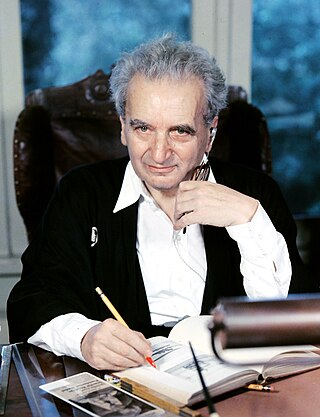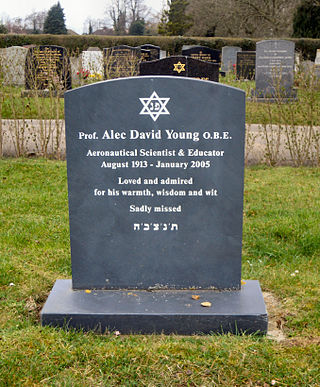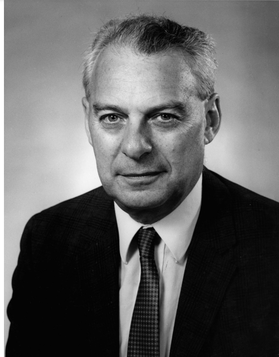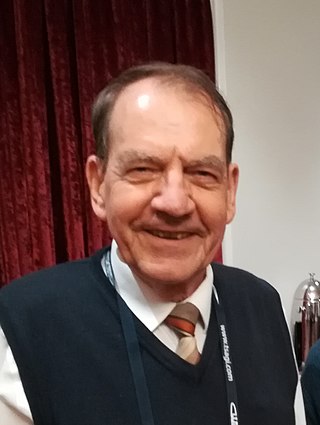Related Research Articles

Theodore von Kármán was a Hungarian-American mathematician, aerospace engineer, and physicist who worked in aeronautics and astronautics. He was responsible for crucial advances in aerodynamics characterizing supersonic and hypersonic airflow. The human-defined threshold of outer space is named the "Kármán line" in recognition of his work. Kármán is regarded as an outstanding aerodynamic theoretician of the 20th century.

Ludwig Prandtl was a German fluid dynamicist, physicist and aerospace scientist. He was a pioneer in the development of rigorous systematic mathematical analyses which he used for underlying the science of aerodynamics, which have come to form the basis of the applied science of aeronautical engineering. In the 1920s, he developed the mathematical basis for the fundamental principles of subsonic aerodynamics in particular; and in general up to and including transonic velocities. His studies identified the boundary layer, thin-airfoils, and lifting-line theories. The Prandtl number was named after him.

Sir Michael James Lighthill was a British applied mathematician, known for his pioneering work in the field of aeroacoustics and for writing the Lighthill report, which pessimistically stated that "In no part of the field have the discoveries made so far produced the major impact that was then promised", contributing to the gloomy climate of AI winter.

Alec David Young was a British aeronautical engineer.
Applied mechanics is the branch of science concerned with the motion of any substance that can be experienced or perceived by humans without the help of instruments. In short, when mechanics concepts surpass being theoretical and are applied and executed, general mechanics becomes applied mechanics. It is this stark difference that makes applied mechanics an essential understanding for practical everyday life. It has numerous applications in a wide variety of fields and disciplines, including but not limited to structural engineering, astronomy, oceanography, meteorology, hydraulics, mechanical engineering, aerospace engineering, nanotechnology, structural design, earthquake engineering, fluid dynamics, planetary sciences, and other life sciences. Connecting research between numerous disciplines, applied mechanics plays an important role in both science and engineering.

Roddam Narasimha FRS was an Indian aerospace scientist and fluid dynamicist. He was a professor of Aerospace Engineering at the Indian Institute of Science (1962–1999), director of the National Aerospace Laboratories (1984–1993) and the chairman of the Engineering Mechanics Unit at Jawaharlal Nehru Centre for Advanced Scientific Research. He was the DST Year-of-Science Chair Professor at JNCASR and concurrently held the Pratt & Whitney Chair in Science and Engineering at the University of Hyderabad. Narasimha was awarded the Padma Vibhushan, India's second-highest civilian award, in 2013 for his contributions to advance India's aerospace technology.
Sydney Goldstein FRS was a British mathematician noted for his contribution to fluid dynamics. He is described as: "... one of those who most influenced progress in fluid dynamics during the 20th century."
Professor John Richard Ockendon FRS is an applied mathematician noted especially for his contribution to fluid dynamics and novel applications of mathematics to real world problems. He is a professor at the University of Oxford and an Emeritus Fellow at St Catherine's College, Oxford, the first director of the Oxford Centre for Collaborative Applied Mathematics (OCCAM) and a former director of the Smith Institute for Industrial Mathematics and System Engineering.
Anatol Roshko was a Canadian-born physicist and engineer. He was the Theodore von Kármán Professor of Aeronautics, Emeritus, at the California Institute of Technology, Pasadena, CA.

Guy Antony Jameson, FRS, FREng is Professor in the Department of Aerospace Engineering at Texas A&M University. Jameson is known for his pioneering work in the field of computational fluid dynamics. He has published more than 300 scientific papers in a wide range of areas including computational fluid dynamics, aerodynamics, and control theory.
Hans Wolfgang Liepmann was an American fluid dynamicist, aerospace scientist and emeritus Theodore von Kármán Professor of Aeronautics at the California Institute of Technology.

Philip Geoffrey Saffman FRS was a mathematician and the Theodore von Kármán Professor of Applied Mathematics and Aeronautics at the California Institute of Technology.
Ali Hasan Nayfeh was a Palestinian-Jordanian mathematician, mechanical engineer and physicist. He is regarded as the most influential scholar and scientist in the area of applied nonlinear dynamics in mechanics and engineering. He was the inaugural winner of the Thomas K. Caughey Dynamics Award, and was awarded the Benjamin Franklin Medal in mechanical engineering. His pioneering work in nonlinear dynamics has been influential in the construction and maintenance of machines and structures that are common in daily life, such as ships, cranes, bridges, buildings, skyscrapers, jet engines, rocket engines, aircraft and spacecraft.
Satya Atluri was an Indian American engineer, educator, researcher and scientist in aerospace engineering, mechanical engineering and computational sciences, who was a Distinguished Professor Emeritus of Aerospace Engineering at the University of California, Irvine. Since 1966, he made fundamental contributions to the development of finite element methods, boundary element methods, Messless Local Petrov-Galerkin (MLPG) methods, Fragile Points Methods, Local Variational Iteration Methods, for general problems of engineering, solid mechanics, fluid dynamics, heat transfer, flexoelectricity, ferromagnetics, gradient and nonlocal theories, nonlinear dynamics, shell theories, micromechanics of materials, structural integrity and damage tolerance, Orbital mechanics, Astrodynamics, digital Twins of Aerospace Systems, etc.

Milton Denman Van Dyke was Professor of the Department of Aeronautics and Astronautics at Stanford University. He was known for his work in fluid dynamics, especially with respect to the use of perturbation analysis in aerodynamics. His often-cited book An Album of Fluid Motion presents a collection of about 400 selected black-and-white photographs of flow visualization in experiments, received – on his request – from researchers all over the world.

Hans G. Hornung is an emeritus C. L. "Kelly" Johnson Professor of Aeronautics and Director of the Guggenheim Aeronautical Laboratory of the California Institute of Technology (GALCIT). He received his bachelor (1960) and master (1962) degrees from the University of Melbourne and his Ph.D. degree (1965) in Aeronautics from Imperial College, London. He worked in the Aeronautical Research Laboratories, Melbourne, and in the Physics Department of the Australian National University (1967–1980), with a sabbatical year as a Humboldt Fellow in Darmstadt, Germany, 1974. In 1980 he accepted an offer to head the Institute for Experimental Fluid Mechanics of the DLR in Göttingen, Germany. He left Germany in 1987 to serve as the director of GALCIT. During his time at GALCIT he oversaw the construction of three large facilities: the T5 hypervelocity shock tunnel, the John Lucas Adaptive-Wall Wind Tunnel, and a supersonic Ludwieg tube.
William Kenneth George is an American-born fluid dynamicist holding both American and Swedish citizenships. He is currently senior research investigator in the Department of Aeronautics at Imperial College London. George is known for his research on both theoretical and experimental turbulence.
Stanley Corrsin was an American physicist, fluid dynamicist, and Theophilus Halley Smoot Professor of Engineering at the Johns Hopkins University. He was known for his contributions in the field of fluid dynamics in general and turbulence in particular. He was a recipient of Fluid Dynamics Prize in 1983. Corrsin died of cancer on 2 June 1986 at the age of 66.
Laurence Joseph Clancy was an Education Officer in aerodynamics at Royal Air Force College Cranwell where his textbook Aerodynamics became standard.

Hassan M. Nagib is a mechanical engineer, aerospace engineer, and academic. He is the John T. Rettaliata Professor of Mechanical and Aerospace Engineering at the Illinois Institute of Technology and was also the Founding Director of the institute's Fluid Dynamics Research Center.
References
- ↑ BRADSHAW, Prof. Peter, Who's Who 2014, A & C Black, 2014; online edn, Oxford University Press, 2014
- ↑ "Fellows". Royal Society. Retrieved 18 September 2014.
- ↑ "Peter Bradshaw". Archived from the original on 5 March 2016. Retrieved 3 November 2015.